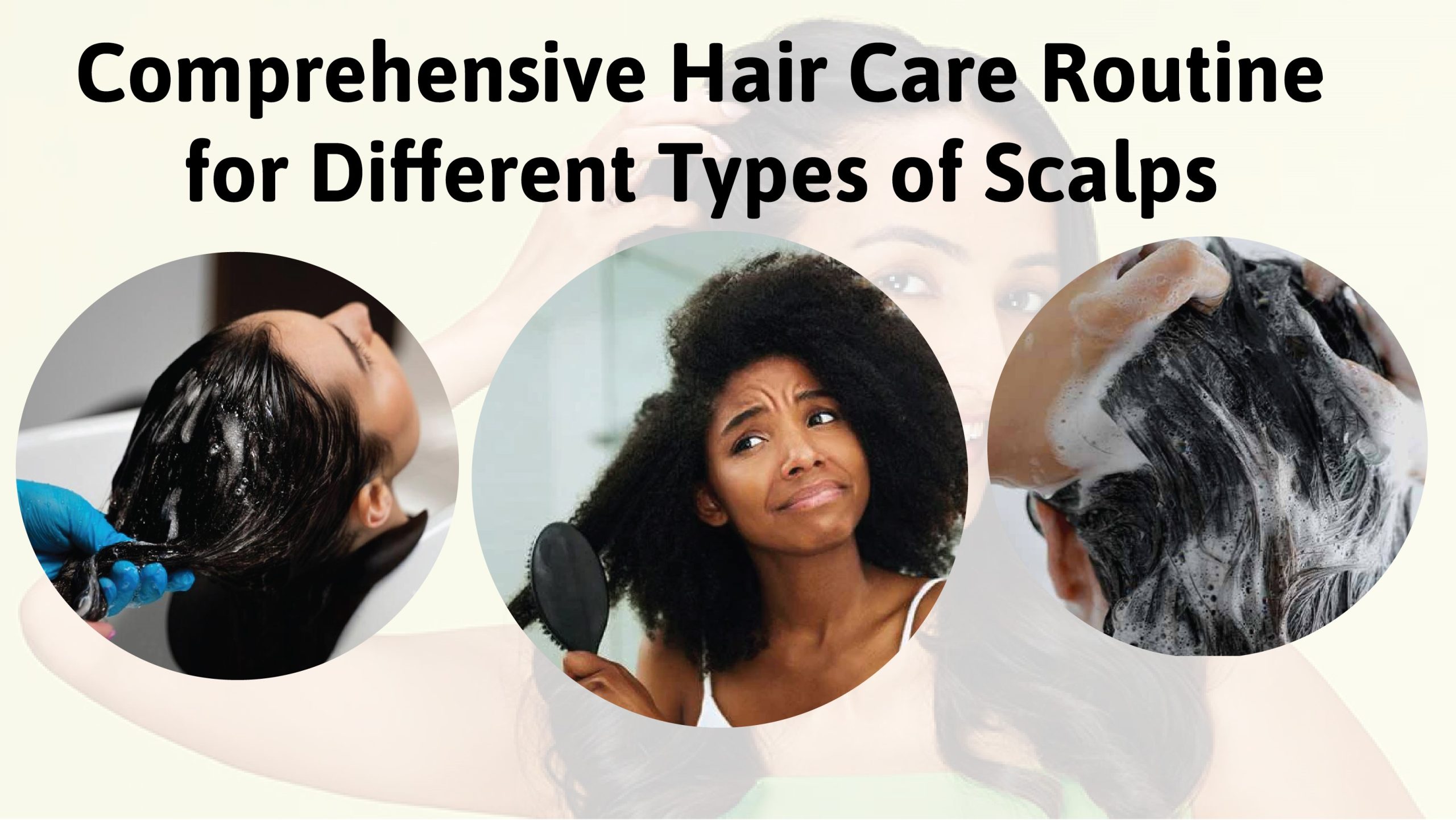Hair care – one of the most important but misunderstood aspects of your daily personal grooming. Having a good hair care regimen can also help to keep your hair healthy and shiny, and can even increase the longevity of your hair. But obviously, everyone has different hair types, so what works for one person will not work for another. Scalp Spa treatments are curated for different scalps and offer a holistic approach to scalp health. Knowing your scalp type helps you get into the personalized and perfect hair care regime.
Understanding Your Scalp Type
As always, you know – everyone has a different scalp type, you understand; so before we get down to the specifics, I first need to ask you this question. Scalps are usually classified into four principal types: oily, dry, normal, and combination. Unfortunately, each type has a completely different characteristic and care.
1. Oily Scalp
Traits: Overproduction of oil, oily scalp, need to wash hair frequently.
Causes: Genetic predisposition, hormonal changes, dietary factors, use of improper hair care products.
2. Dry Scalp
Traits: Flakes, itchy, skeleton, and lack of brilliance in hair.
Causes: Dry oils, environment, rough hair products.
3. Normal Scalp
Traits: normal sebum production, shiny, less problems
Causes: Natural genetic reasons, healthy diet, proper hair care.
4. Combination Scalp
Traits: Roots are oily, ends dry, and texture from root to tip is almost different.
Causes: Genetic, Too much Washing, Wrong Products
Hair Care According to Scalp Type
1. Oily Scalp
For those people who have oily scalps, the key is to control oil production from the scalp, without taking away all of the natural moisture of hair.
Shampooing: Clean the mane with a mild, sulfate-free shampoo that caters to oily hair. Wash your hair often, but not daily, to reduce the amount of sebum your sebaceous glands produce. Aim for every other day.
Conditioning: Just apply conditioner on the ends of your hair, not the scalp. Opt for a light, non-greasy formula.
Scalp Treatments: Add a clarifying treatment in once a week to remove any excess oils and product build-up. Search for salicylic acid or tea tree oils in the ingredients list.
Styling: stay away from heavy styling products which can contribute to the greasiness. Choose light sprays or mousse
2. Dry Scalp
With its intense hydrating effect, it can really help dry skin and the key is to keep the scalp moisturised and nourished whilst not irritating it further.
Shampooing: Make it a hydrating shampoo laden with ingredients such as glycerin, aloe vera, or hyaluronic acid. Avoid shampooing more than twice a week to avoid stripping hair of natural oils.
Conditioning: Apply a rich and hydrating conditioner from roots to ends. Leave it on for several minutes to penetrate deeply.
Scalp Treatments: Use scalp masks or oils with coconut oil, argan oil, shea butter, or another moisturizing ingredient on a regular basis to help provide deeper moisture. For extra hydration, also look into overnight treatments.
Style it: Keep direct heat styling to a minimum, and always use a heat protectant spray. Choose natural styling techniques such as airdrying or braids.
3. Normal Scalp
The normal scalp is fortunate in that it has a natural balance and that it does not present any problems.
Washing: Wash with proprietary products, a neutral pH that does not attack the natural fat of the scalp Wash your scalp 2- 3 times a week and you’re good to go.
Conditioning: You can only condition the natural hair, from mid-length to the ends. Opt for a light, moisture-filled formula that hydrates the hair but is not so heavy that it drags it down.
Scalp Treatments: The use of scalp treatments, such as scalp exfoliators, on a once-in-a-while basis can also contribute to scalp health. Chamomile and lavender are both very soothing ingredients.
Styling: You may use styling products galore, but just be very gentle because too much of anything is not good. When using heat-styling equipment, always use a heat protectant.
4. Combination Scalp
Dealing with a combination scalp occurs if you have oily roots but dry ends.
Shampooing: Only Cleanse the Scalp shampoo so that you can cleanse the scalp without stripping the base of the hair. Shampoo every 2-3 days.
Conditioning: Always condition, and pay close attention to the ends and lengths of the hair while conditioning. Opt for a hair serum that’s specifically suited to dry hair.
Scalp Treatments: Target the roots with a good old-fashioned clay mask to manage oil and oils are your friend for the ends.
Style: Use light styling products and do not place them on the root area. Another option is using a leave-in conditioner or serum for the ends.
General Hair Care Tips
Regardless of your scalp type, some general hair care tips can benefit everyone.
Diet and Hydration: A balanced diet rich in vitamins and minerals, coupled with adequate water intake, can significantly improve scalp and hair health.
Gentle Handling: Avoid excessive brushing, especially when hair is wet. To gently detangle, use a wide-tooth comb.
Protective Hairstyles: Minimize damage by opting for protective hairstyles and avoiding tight hairstyles that can stress the hair roots.
Regular Trims: Regular trims can prevent split ends and promote healthy hair growth.
Conclusion
A personalized hair care routine tailored to your scalp type can make a significant difference in the health and appearance of your hair. By understanding your scalp type and adopting appropriate hair care practices, you can achieve a healthy, balanced scalp and beautiful hair. Remember, consistency is key, and it might take some time to see noticeable improvements. Just like maintaining a well-tuned tractor for optimal performance, taking care of your scalp with the right routine will ensure your hair remains vibrant and strong.
